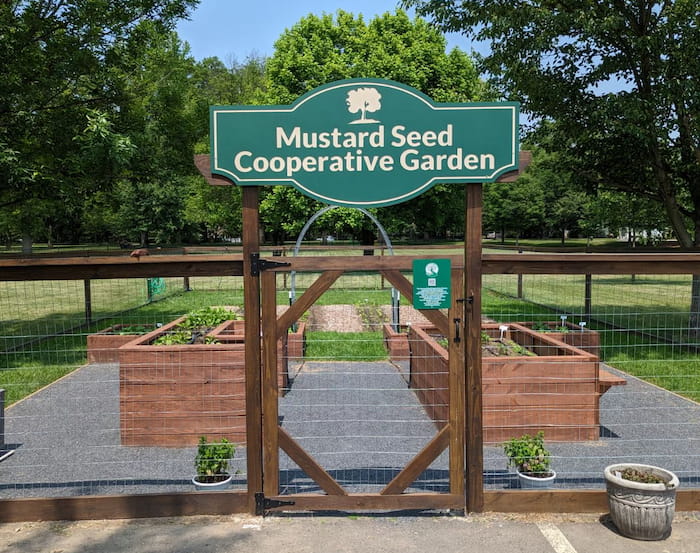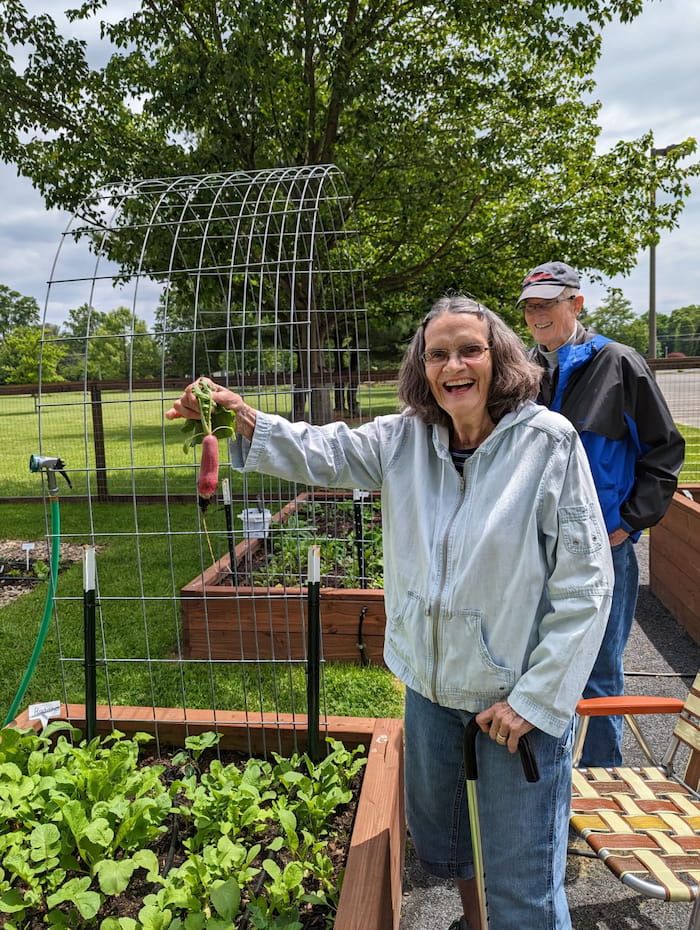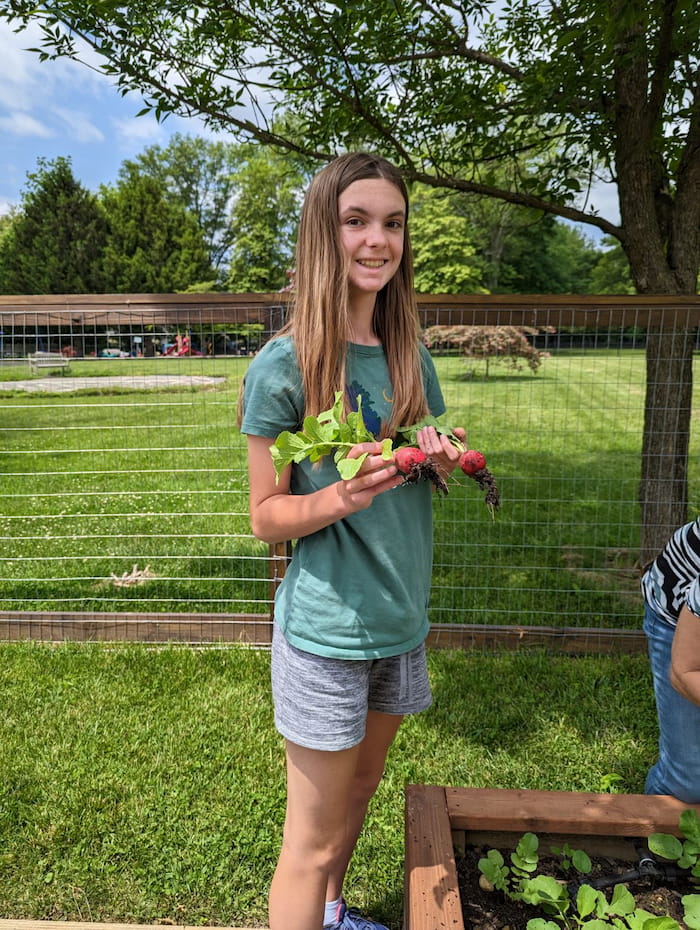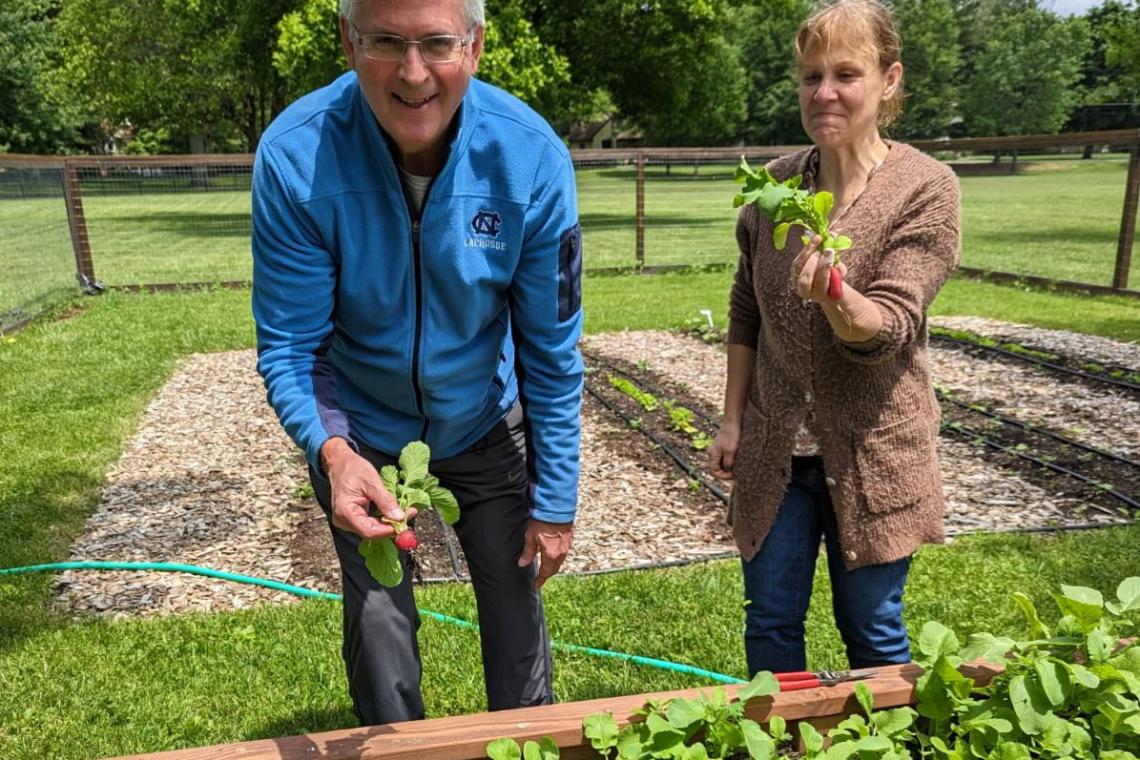“We have seven acres and we feel like we could be putting it to better use.” This was the phone call I received in 2022 from the First Presbyterian Church (FPC) pastor in Moorestown, NJ. It’s a stunning brick church with a towering white steeple and seven perfectly manicured acres in the center of town.

I love these calls because it means people are giving thought to both our fragile and expensive food system but also caring for community members who may lack the resources to eat healthy food. I met with their team of volunteers all winter to come up with a plan for raised beds, a fence (they have deer), and a list of fruits and vegetables they thought would be suitable for a food pantry.
Over the years, I’ve helped dozens of nonprofits and schools set up gardens, and I find there are three factors that are critical to any successful non-profit garden: an organized leader, a robust team of volunteers, and a temporary garden expert to help them get up and running. FPC had a fantastic leader in member Leslie Spencer, and she assembled a dream team of enthusiastic volunteers. They just needed an expert, and I was happy to help!

Over the winter, we determined our budget. While volunteers can and often do take care of construction, the church had the funds via a generous donor to hire a local contractor to handle construction. The raised beds and fences, including a handicapped accessible bed, were finished by March of 2022, allowing us to plant up in April. I offered a community-wide seed-starting workshop that was well attended. Participants cared for their seedlings with a promise of returning some of them to the church in the spring. By April, peas, lettuce, spinach, beets, and carrots were popping up, and in May, we followed with tomatoes, peppers, cucumbers, and squash. Volunteers added herbs around the perimeter to attract pollinators and add beauty to the garden.
As a group, we committed to organic methods only. Part of my role in these projects is to provide experience and instruction, and I like to allow each partner to determine what they will grow, how the garden will operate, and who they will serve. FPC decided to go chemical free which is the method I greatly prefer, but I knew it would mean a higher level of education for the team. When you don’t resort to pesticides, it opens a whole world of pest and disease management, like hand-picking insects off (I know…ew!), biological controls like ladybugs and nematodes, and structures that support netting on susceptible plants. It’s harder for sure, but since FPC was focused on providing produce to local food pantries, they wanted to be sure it was as safe as possible to eat.

The first year was so encouraging. Volunteers remained vigilant, a hose bib was added, and I visited often to help troubleshoot and offer wisdom on plant spacing, fertilizer, and more. We had setbacks, of course. Squash vine borers threatened the squash, and we had to dig them out by hand. The cucumbers fell to bacterial wilt by July. Late blight, the scourge of many gardens, attacked the tomatoes, and we needed to prune aggressively.
Despite these common setbacks, the garden absolutely thrived. The first year produced over 400 pounds of fresh produce for local food pantries. The second year saw the addition of a shed to store tools and the installation of soaker hoses. By August 2024, FPC had provided over 600 pounds of fresh, organic vegetables to those in need in the community. Another big win was the team of volunteers who morphed from new and inexperienced gardeners to such an informed crew that they no longer needed me except for a very rare consult. For me, this is the best goal. Making myself irrelevant allows these projects to carry on without me.
In the coming months, I’ll be offering more content on how you can start a garden for your non-profit. I welcome questions so ask away. Gardening isn't always easy, but it’s always worth it…and I’m happy to take those calls


